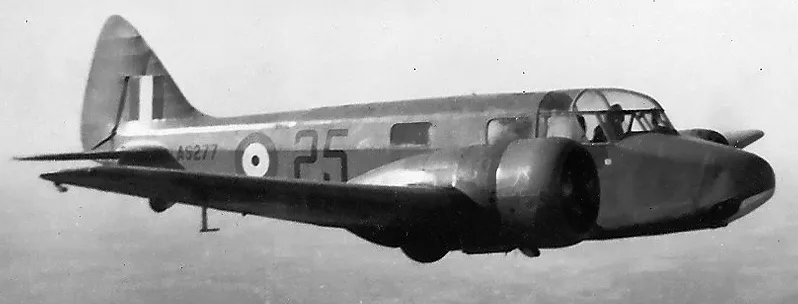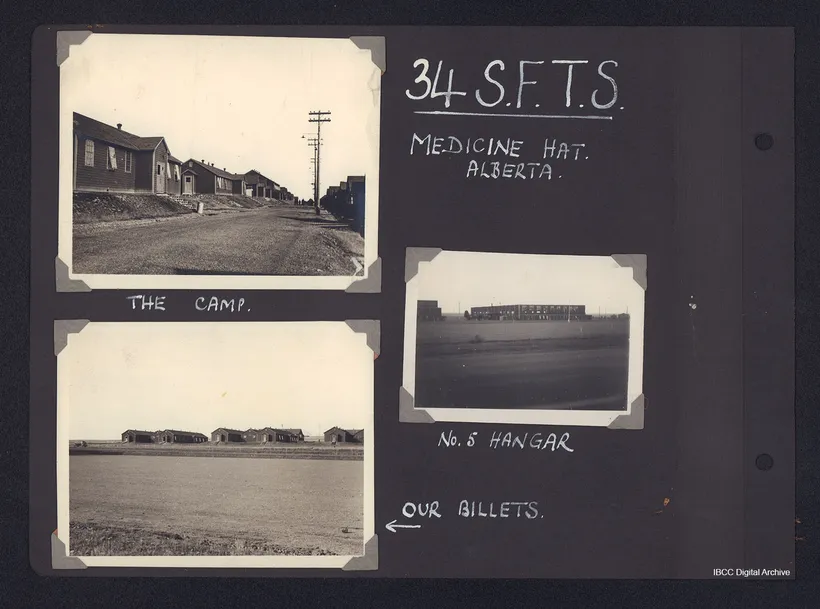Duncan, George William Martin (Leading Aircraftman)
Killed in Flying Accident 1942-May-15


Birth Date: 1922
Born:
Parents: Son of Mr. and Mrs. George W. Duncan, of Stocksfield, Northumber]and, England.
Spouse:
Home:
Enlistment:
Enlistment Date: unkown date
Service
RAFVR
Unit
34 SFTS- Service Flying Training School (RAF)
Base
RCAF Stn. Medicine Hat, Alberta
Rank
Leading Aircraftman
Position
Service Numbers
1315626
Crew or Other Personnel
Oxford AS696
Accident Card - Airspeed Oxford Mk. I serial:AS696
This accident involved 1 aircraft on 1942-May-15. Oxford s/n AS696.
This accident involved 2 people. Duncan GWM, Ford AA
This accident had 2 fatalities. Leading Aircraftman George William Martin Duncan RAFVR Killed in Flying Accident service no:1315626 Oxford AS696, Leading Aircraftman Archibald Athron Ford RAF Killed in Flying Accident service no:1237444 Oxford AS696
Oxford serial: AS696

Airspeed A.S. 10 Oxford Mk. II, RCAF (Serial No. AS277), 25, in flight over Saskatchewan, 1942.
The Airspeed AS.10 Oxford was a twin-engine monoplane aircraft developed and manufactured by Airspeed. It saw widespread use for training British Commonwealth aircrews in navigation, radio-operating, bombing and gunnery roles throughout the Second World War.
The Oxford was developed by Airspeed during the 1930s in response to a requirement for a capable trainer aircraft that conformed with Specification T.23/36, which had been issued by the British Air Ministry. Its basic design is derived from the company's earlier AS.6 Envoy, a commercial passenger aircraft. Performing its maiden flight on 19 June 1937, it was quickly put into production as part of a rapid expansion of the Royal Air Force (RAF) in anticipation of a large-scale conflict.
As a consequence of the outbreak of war, many thousands of Oxfords were ordered by Britain and its allies, including Australia, Canada, France, New Zealand, Poland, and the United States. Following the end of the conflict, the Oxford continued to achieve export sales for some time, equipping the newly formed air forces of Egypt, India, Israel, and Yugoslavia. It was considered to be a capable trainer aircraft throughout the conflict, as well as being used a general-purpose type. A large number of Oxfords have been preserved on static display. Wikipedia
Aircraft Images
Oxford AS696
Oxford Mk. I AS696
To No. 4 Training Command on 29 December 1941, for use by No. 34 Service Flying Training School at Medicine Hat, Alberta. Winter conversion set installed at No. 34 SFTS by 30 April 1942. Category A crash at 13:00 on 15 May 1942. Crashed and burned in farm field 16 miles south-west of Maple Creek, Alberta, while on a cross country navigation exercise. Both RAF student occupants killed, Leading Aircraftman G.W.M. Duncan and Leading Aircraftman A.A. Ford. No eye witnesses to crash, enquiry concluded either pilots attempted to descend below unforecast clouds and struck ground, or aircraft iced up and descended until ground struck. Scrapped by No. 10 Repair Depot.1941-10-27 Taken on Strength No. 9 Repair Depot 2019-08-20
1942-May-15 Accident: 34 Service Flying Training School Loc: Maple Creek Saskatchewan Names: Duncan | Ford
1942-06-22 Struck off Strength Struck off, reduced to spares and produce 2019-08-20
Unit Desciption
34 SFTS (34 Service Flying Training School)
Graduates of the EFTS "learn-to-fly" program went on a Service Flying Training School (SFTS) for 16 weeks. For the first 8 weeks the trainee was part of an intermediate training squadron; for the next 6 weeks an advanced training squadron and for the final 2 weeks training was conducted at a Bombing & Gunnery School. The Service schools were military establishments run by the RCAF or the RAF.
There were two different types of Service Flying Training Schools. Trainees in the fighter pilot stream went to an SFTS like No. 14 Aylmer, where they trained in the North American Harvard or North American Yale. Trainees in the bomber, coastal or transport pilot stream went to an SFTS like No. 5 Brantford where they learned multi-engine technique in an Airspeed Oxford, Avro Anson or Cessna Crane.

For More Information on RCAF Station Medicine Hat see here
RCAF.Info - RCAF Station Medicine Hat AB
RCAF.Info - Relief Landing Field Holsom AB
RCAF.Info - Relief Landing Field Whitla AB
![]() Bomber Command Museum Of Canada - 34 SFTS
Bomber Command Museum Of Canada - 34 SFTS
David Carter History Of NO34 SFTS
Project 44 BCATP